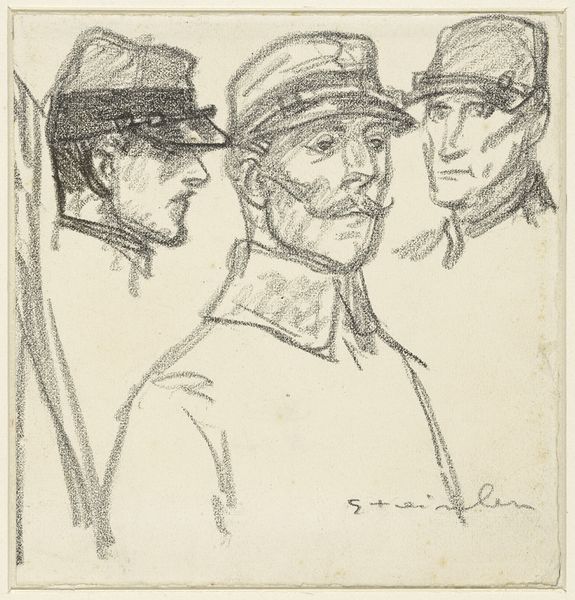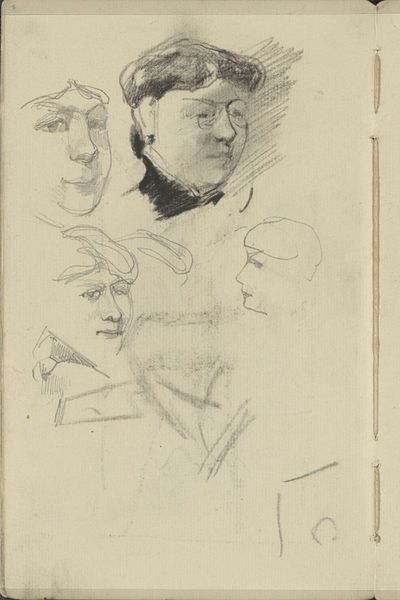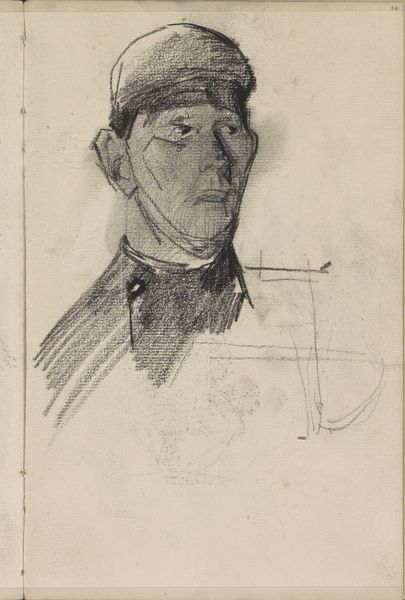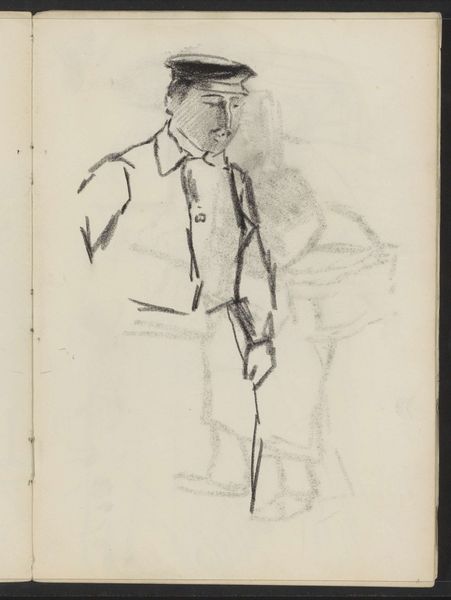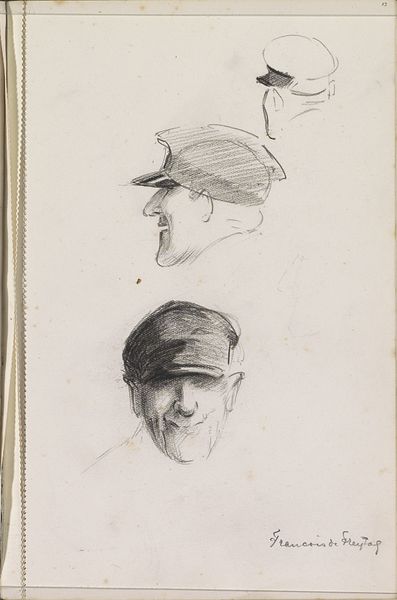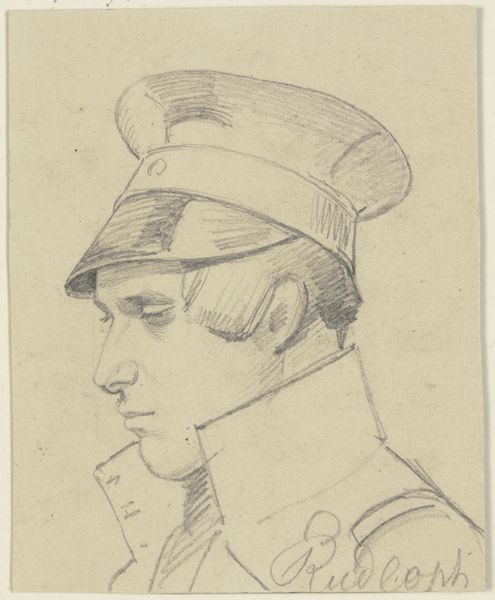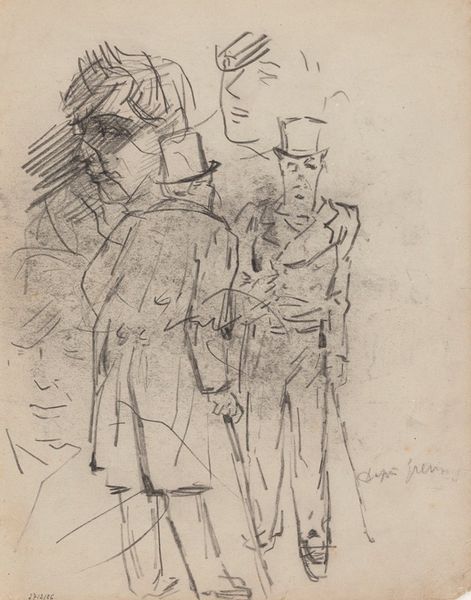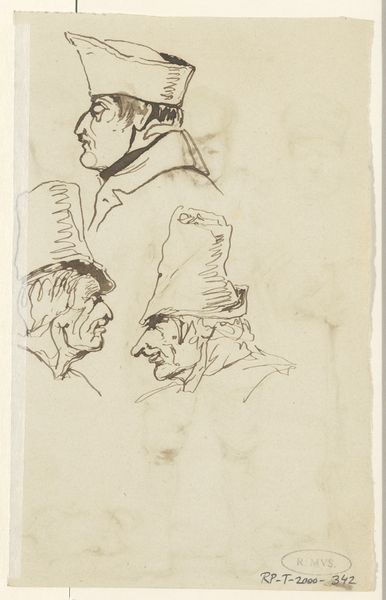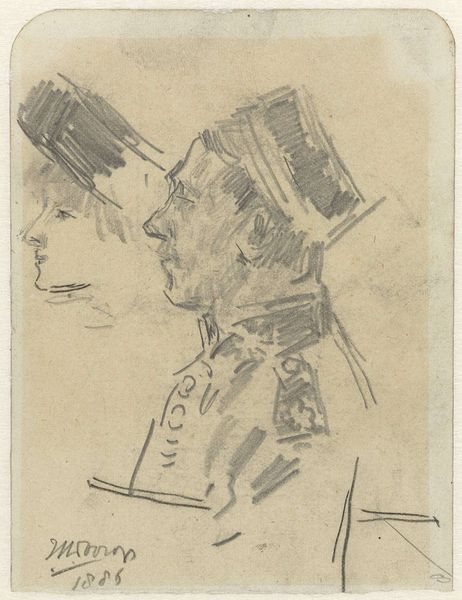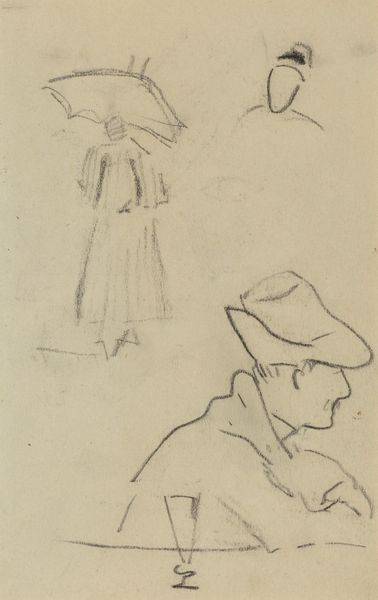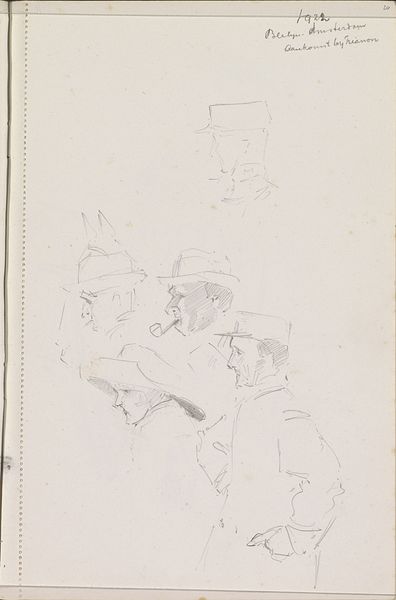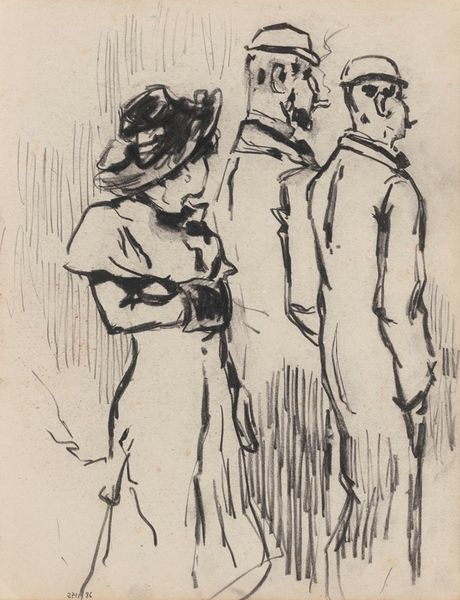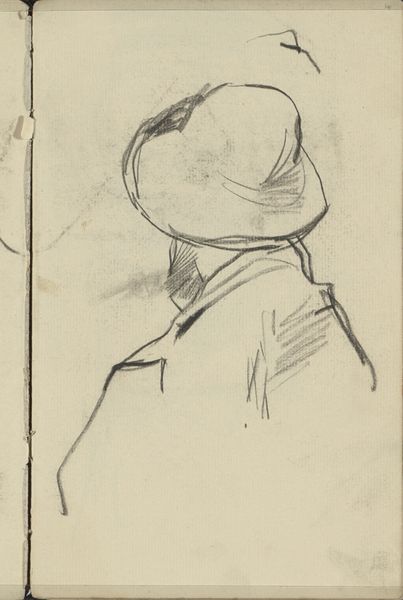
Copyright: Rijks Museum: Open Domain
Curator: Looking at these studies by George Hendrik Breitner, likely executed sometime between 1900 and 1923, you can feel the artist's hand moving quickly. Editor: My immediate impression is of something intimate and personal. These quick sketches evoke a certain turn-of-the-century melancholy. It feels like a glimpse into someone's private world, or even lost memories captured with pencil. Curator: Indeed. Breitner was keenly interested in capturing the life of Amsterdam around him. These studies, done in pencil, are raw material. They're the initial steps in his larger process of observing, documenting, and then producing his paintings, photographs, and prints. We must consider them as discrete, unmediated traces of a labor-intensive process. Editor: And consider those processes through a different lens—these "figure studies," with their apparent emphasis on bourgeois subjects—point towards prevailing social dynamics. Breitner, even in his sketchbooks, reproduces social hierarchy of the time. Who has the privilege to be seen? To be remembered? How do we access this seemingly inaccessible, upper-crust world? Curator: I agree there are nuances in their societal positions suggested by their dress—notice the hats. But Breitner’s sketches transcend simple record-keeping. They grapple with issues of light and shadow, how to translate form with minimal effort, all vital to producing saleable works in his studio. The paper itself carries its own manufacturing and economic context. Editor: That makes me wonder: beyond individual details, are there hidden emotional or gendered dynamics at play? The figures' posture, their averted gazes - they imply certain relationships. I can't help but notice a possible commentary here—a criticism of rigid societal structure perhaps through understated irony and the stark depiction of isolation. Curator: I tend to focus more on what we can ascertain definitively through materiality and historical records. It seems that in this case, these sketches were a means to an end for Breitner, a working process for how forms come into being on surfaces for later reproduction. I think as art historians, that's our goal; examining the origins of forms of culture production, through an understanding of the ways people worked. Editor: And by recognizing those biases and social constructions, aren't we offering a more truthful picture? Curator: Perhaps. By discussing materials and their processes together with gendered meanings we reach for fuller understanding. Editor: Exactly. Art offers opportunity not only for aesthetic or theoretical interpretation but to actively re-evaluate its place in contemporary sociopolitical issues, with its materiality as important background.
Comments
No comments
Be the first to comment and join the conversation on the ultimate creative platform.

